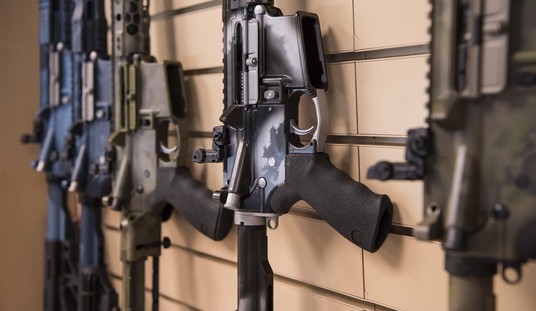Media supporters of gun control have thoroughly beclowned themselves in recent weeks. Stephanie Soechtig, director Katie Couric’s propaganda film Under the Gun, was caught both fraudulently editing her film and admitting that she conspired with one of her producers to commit at least four felonies in interstate gun sales.HBO’s Real Sports With Bryant Gumbel was then caught being intentionally dishonest in a show attacking the AR-15, conflating it with the military M4 carbine and M16 assault rifle.
So what might it look like if the media told the truth about AR-15s? It might look something like this.
AR-15s are the most common kind of rifle sold in the United States.
Though the media will never admit it, variation of the AR-15 is by far the most common rifle sold in the United States. While exact figures are hard to pin down for a family of firearms that has been on the civilian market continuously since 1963 and which has been made by dozens of companies, estimates are 8-9 million AR-15 variants in the United States.
AR-15s sales are up sharply, yet their use in crime is dropping.
Despite sales of AR-15s growing astronomically in recent years, homicides committed with rifles of all kinds are exceedingly rare and continue to plummet. Just 367 murders of 8,874 murders committed in 2010 were committed with any kind of rifle, and murders committed with AR-15s was too rare to bother tracking individually. Rifle homicides dropped to 298 in 2012, and to just 248 in 2014.

Curiously, none of the media outlets attacking the AR-15 would mention this very important fact that undermines their central thesis that these rifles are too dangerous to own for American citizens. If they’re so dangerous, why is their use in crime dropping as their sales have dramatically increased?
AR-15s are not “high-powered.”
Perhaps the most pathetic claim made by the media regarding the AR-15 is that it is “high-powered.” Objectively, that claim is a lie.
The two most common chambering for the AR-15 are .223 Remington and 5.56 NATO. They’re nearly identical cartridges, with both using the same .22 caliber bullets. They are considered intermediate-powered, having more power than a handgun, but much less power than an actual high-powered rifle.
The most common loading for AR-15s is a 55-grain ball round, followed by a 62-grain with a mild steel core. In a standard 16″ AR-15 barrel, the 55-grain load attains just under 1,200 ft/pounds of muzzle energy, while the 62-grain bullet, which has slightly more mass, has about 30 ft/lbs of energy more.
Now let’s compare the 1,200-1,230 ft/lbs of muzzle energy in the average AR-15 against the .30-’06, the most common rifle cartridge fielded by American forces in both World Wars, and which is still one of the most common hunting cartridges for medium and large game in North America.
The most common bullet weight for the .30-’06 weighs 150-grains, or almost 3 times as much as the most common AR-15 bullet, and has more than double the muzzle energy, with about 2,900 ft/lbs of force.
The .300 Winchester Magnum—a true “high-powered” magnum-class rifle used by U.S. Army snipers and other long-range shooters—features a 220-grain bullet with roughly 3,900ft/lbs of muzzle energy. A true “high-powered” or magnum-class rifle is going to have more than three times as much muzzle energy as the soft-shooting AR-15.

The low-power of the most common AR-15 calibers translates into low recoil for the shooter, and helps explain why the AR-15 is a favorite of men, women, teens, and even-preteen shooters.






Join the conversation as a VIP Member